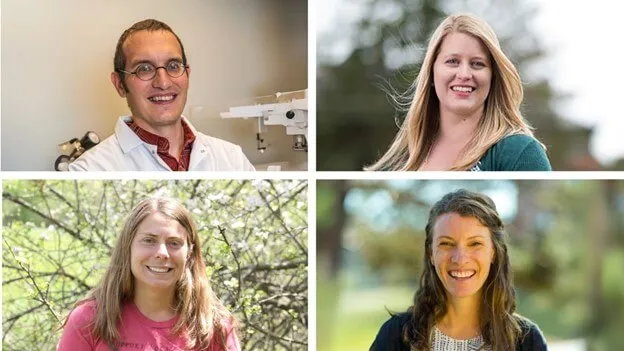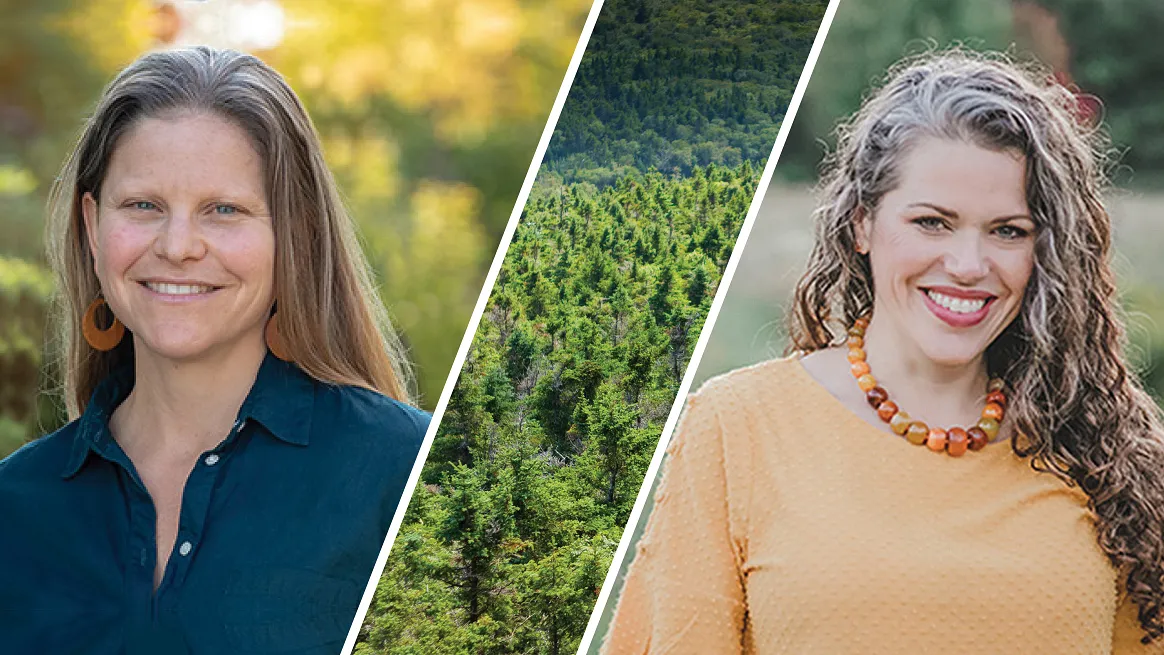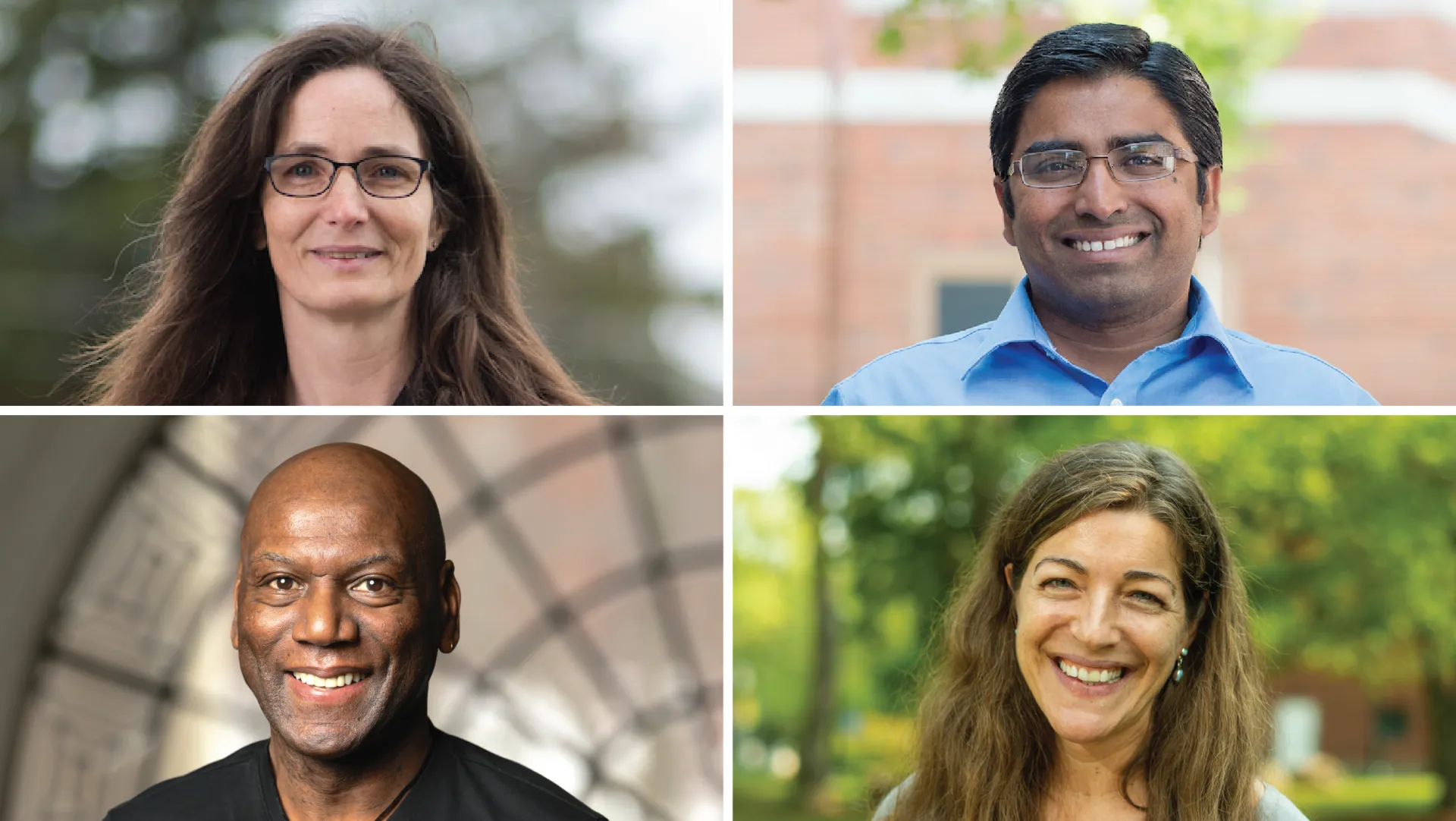UVM’s Matthew Scarborough (CEMS) and Heather Darby (Extension) will investigate how Vermont flooding influences greenhouse gas emissions from agricultural fields, and the use of biochar as a strategy to mediate those impacts in soil. Biochar is a charcoal-like carbon source that is produced from organic materials (agricultural and forestry) through a process (pyrolysis) that involves slow burning under low oxygen conditions. The research comes as agricultural fields are increasingly vulnerable to the impacts of intense rain events and frequent flooding in Vermont.
Using soil cores collected from the Borderview Research Farm in Alburg, Vermont, the researchers will observe how biochar can reduce methane and nitrous oxide emissions from flooded agricultural fields. This process will involve collecting soil samples from the farm and measuring their emissions in the lab, comparing soils treated with biochar or manure.
“Methane has roughly 28 times the global warming potential of carbon dioxide, and nitrous oxide, 273 times,” explains Scarborough. “The long-term impact of repeated flooding on fields is something that we’ll be figuring out, and if we can find a way to reduce nutrient loss, to retain more carbon in the soil, to keep soil health in check, all of that is good for the farmers.” He added that from a larger-scale climate perspective, “any carbon that’s not turning into methane is a good thing. Any nitrogen that’s not flying away as nitrous oxide is a good thing."
Each member of the four-person research team brings different expertise to the project. Darby has more than twenty years working on farms and with farmers, while graduate student Lindsey Ruhl was curious to look at how flooding will impact greenhouse gas emissions. Carol Adair has expertise in monitoring greenhouse gas emissions, while Scarborough’s expertise is in the soil microbial interactions that result in the emissions and consumption of greenhouse gases.
“I think it's going to create some results that will catalyze additional research among this group of investigators, so in that way I’m really excited,” says Scarborough.
The second Catalyst Award project will use remote data to better understand how tree cover and land use affect children’s health in the Brazilian Cerrado.
UVM’s Kelsey Gleason (CNHS) and Gillian Galford (RSENR) will explore the relationship between land cover and land-use changes and preventable health outcomes in children, including stunting and diarrheal disease. These health outcomes are “two of the most significant contributors to childhood morbidity and mortality worldwide,” says Gleason. The project will focus on the biodiverse biome of the Brazilian Cerrado, South America’s largest savanna.
“We haven't been able to identify in the literature anything that really touches on the intersection of all of these variables: changes to the environment, socioeconomic changes, and public health challenges—particularly regarding the health of kids,” says Gleason. The project will draw upon Galford’s expertise in geospatial analysis and Gleason’s expertise in children’s health outcomes.
Galford said there has been extensive research on forest cover and its impact on health outcomes, but less study of land cover, land-use change, and open tropical ecosystems. The Cerrado is “a hot spot for biodiversity loss and rapid, wide-spread agricultural development,” says Galford. “There is a real need to bring more attention to that ecosystem.”
The award will support travel to Brazil to collaborate with local researchers and in-country partners. “We want to establish and build relationships—to bring a localized approach,” Galford says. Galford and Gleason hope to develop these collaborations to expand this research in the future.
"I'm very excited about the two projects selected for the latest Catalyst Awards," said Gund Institute Director Taylor Ricketts. "These projects embody two of our most important goals: improving human health and ameliorating climate change. More importantly, these efforts promise to directly help kids and farmers. I’m looking forward to watching these researchers expand this work, and seeing how they effect positive change for people and nature."
About the Gund Catalyst Award
Since launching in 2017, the Gund Catalyst Award program has provided $1.8 million in startup funds, supporting 28 innovative projects and over 140 UVM scholars. The program has already generated over $40 million in external funds, a 38-to-1 return on investment for completed projects, and inspired real-world action.
Catalyst Awards must connect to Gund research themes, which are related to UN Sustainable Development Goals. Proposals are evaluated by UVM and external evaluators on intellectual merit, interdisciplinary reach, alignment with Gund themes, strength of team, potential for impact, and potential for growth. Additional priority is given to new UVM collaborations and collaborations with colleagues outside UVM, as well as opportunities for students. Projects that include a focus on inequality, racial justice, and diversity dimensions of environmental challenges are encouraged, as are those that have policy relevance and potential for real impact.
Learn more about Gund Catalyst Awards.
The Gund Institute also supports fellowships for PhD students, postdoctoral researchers and undergraduates; the Apis Fund, which supports conservation and research on bees and other pollinators; and the Eric Zencey Prize in Ecological Economics, which celebrates long-form environmental writing.
About the Gund Institute at UVM
The Gund Institute for Environment at the University of Vermont is a research center dedicated to understanding and tackling the world’s most critical environmental challenges. Driven by the belief that research should inspire action, the Institute takes a cross-sector approach to solving environmental issues with stakeholders from government, business, and broader society. The Institute focuses on five interconnected research themes: climate solutions, sustainable agriculture, health and well-being, equity and justice, and resilient communities. With over 250 scholars in Vermont and across the world, the Institute brings together a network of internationally recognized researchers from diverse disciplines, including the natural and social sciences, business, health, technology, engineering, and the humanities.


